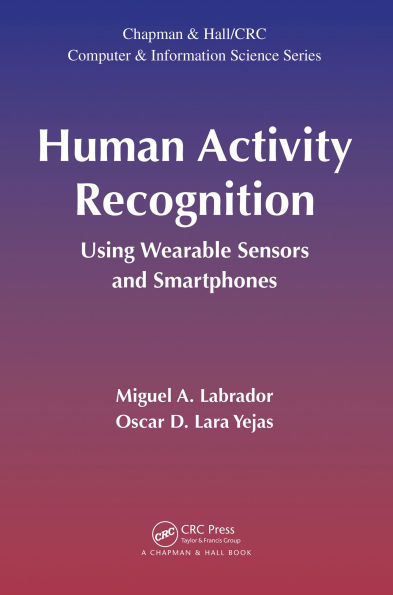Learn How to Design and Implement HAR Systems
The pervasiveness and range of capabilities of today’s mobile devices have enabled a wide spectrum of mobile applications that are transforming our daily lives, from smartphones equipped with GPS to integrated mobile sensors that acquire physiological data. Human Activity Recognition: Using Wearable Sensors and Smartphones focuses on the automatic identification of human activities from pervasive wearable sensors—a crucial component for health monitoring and also applicable to other areas, such as entertainment and tactical operations.
Developed from the authors’ nearly four years of rigorous research in the field, the book covers the theory, fundamentals, and applications of human activity recognition (HAR). The authors examine how machine learning and pattern recognition tools help determine a user’s activity during a certain period of time. They propose two systems for performing HAR: Centinela, an offline server-oriented HAR system, and Vigilante, a completely mobile real-time activity recognition system. The book also provides a practical guide to the development of activity recognition applications in the Android framework.
Learn How to Design and Implement HAR Systems
The pervasiveness and range of capabilities of today’s mobile devices have enabled a wide spectrum of mobile applications that are transforming our daily lives, from smartphones equipped with GPS to integrated mobile sensors that acquire physiological data. Human Activity Recognition: Using Wearable Sensors and Smartphones focuses on the automatic identification of human activities from pervasive wearable sensors—a crucial component for health monitoring and also applicable to other areas, such as entertainment and tactical operations.
Developed from the authors’ nearly four years of rigorous research in the field, the book covers the theory, fundamentals, and applications of human activity recognition (HAR). The authors examine how machine learning and pattern recognition tools help determine a user’s activity during a certain period of time. They propose two systems for performing HAR: Centinela, an offline server-oriented HAR system, and Vigilante, a completely mobile real-time activity recognition system. The book also provides a practical guide to the development of activity recognition applications in the Android framework.

Human Activity Recognition: Using Wearable Sensors and Smartphones
207
Human Activity Recognition: Using Wearable Sensors and Smartphones
207
Product Details
| ISBN-13: | 9781040072479 |
|---|---|
| Publisher: | CRC Press |
| Publication date: | 12/05/2013 |
| Series: | Chapman & Hall/CRC Computer and Information Science Series |
| Sold by: | Barnes & Noble |
| Format: | eBook |
| Pages: | 207 |
| File size: | 3 MB |
